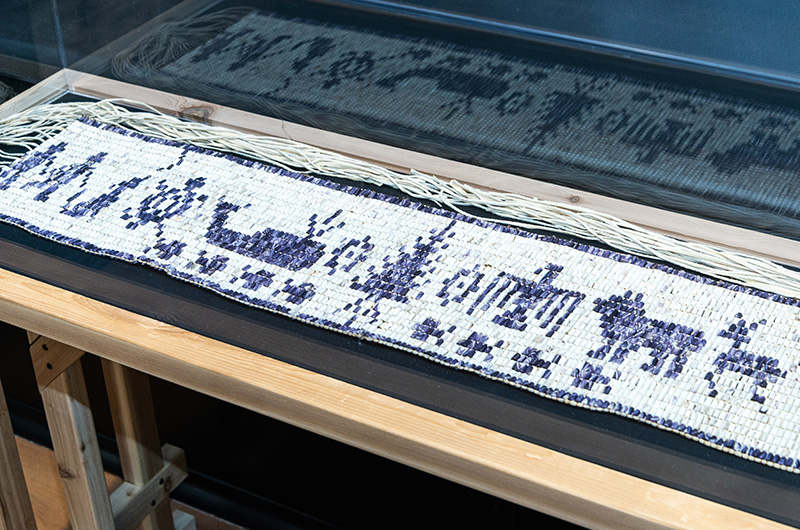Three and a half centuries after English soldiers snatched the native Wampanoags’ greatest heirloom, the wampum-beaded belt of slain sachem Metacom has never been recovered — or forgotten.
The Wampanoags now have a new symbol to unite them as a people. More than 100 tribal artisans in Massachusetts have created a contemporary wampum belt that pays tribute to the lost prize while opening a new chapter in Wampanoag history.
First exhibited in England in 2020 as part of the 400th anniversary observances of the Mayflower voyage to what became Plymouth, Mass., the new belt is making its United States debut through May 8 at the Martha’s Vineyard Museum as the centerpiece of an exhibition titled Wampum: Stories from the Shells of Native America.
The belt has come full circle here: Its lead artisans are beadmaker Jason Widdiss and weavers Linda Coombs and Julia Marden, all of the Aquinnah tribe.
More than four feet long and almost 10 inches wide, the belt is made with 5,000 white and purple beads hand-crafted from whelk and quahog shells and woven — with tanned deer skin and natural hemp thread — into images of strength and heritage for the Wampanoag people.
Centered on a white pine tree, symbolizing the tribe’s 12,000-year heritage, the belt also contains beaded images of the earth, animals, birds and sea creatures — including a whale, representing Moshup, and a stream of herring.
The design emerged from a series of gatherings among tribal members, in a consensus that included the agreement that more images will be added as the belt continues to grow.
“This belt will never be complete,” reads one of the panels at the exhibition. “Many more beads will come. They will be woven to include more clan symbols, more cultural milestones and more spiritual images.”
The project — supported by an arts council in Plymouth, England — has revitalized tribal wampum traditions, according to the panel text.
Tribal members also hope the publicity around the traveling exhibition will help dislodge clues to the fate of the original wampum belt, which was stripped from Metacom’s body in 1676 after he died fighting the English in what is now Rhode Island.
It’s often called King Philip’s Belt — a double misnomer, as King Philip was merely the settlers’ name for Metacom and the belt was not his but the entire tribe’s.
Considered the equivalent of crown jewels for the Wampanoag, it was to be shipped back to the English monarch, Charles II — but it never arrived, according to a short documentary that screens as part of the museum show.
The exhibition also contains a traditional stone and wood tool used for crafting the thousands of shell beads, which are less than half an inch long with holes just .05 inches wide.
The wall panels include color images of contemporary tribal members alongside historical narratives and a timeline of the tribe’s shared history with Europeans and their descendants, from 1502 to 2020.
Wampum: Stories from the Shells of Native America is on display through May 8 during regular Martha’s Vineyard Museum hours: Tuesday through Sunday from 10 a.m. to 4 p.m.





Comments (4)
Comments
Comment policy »